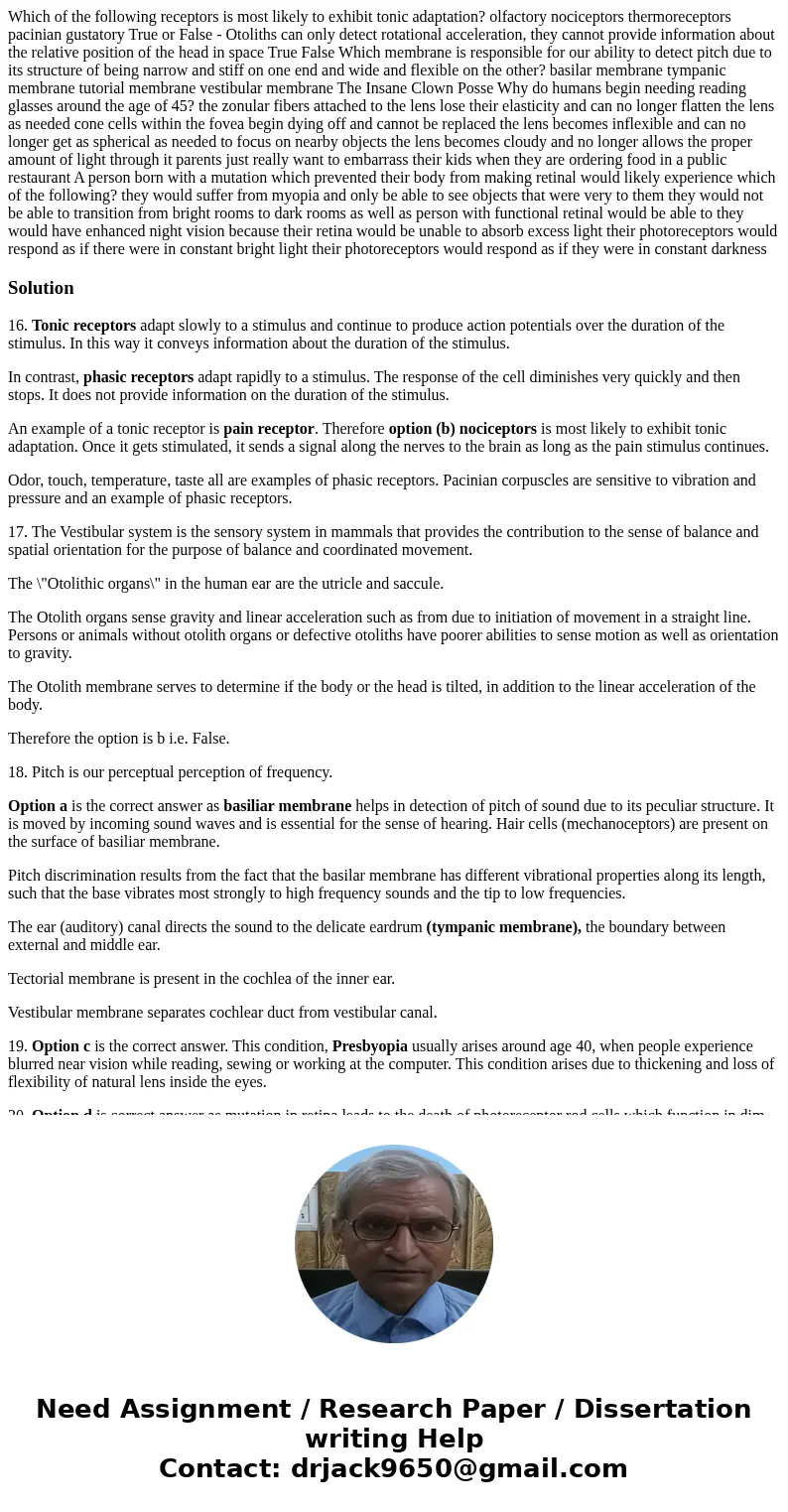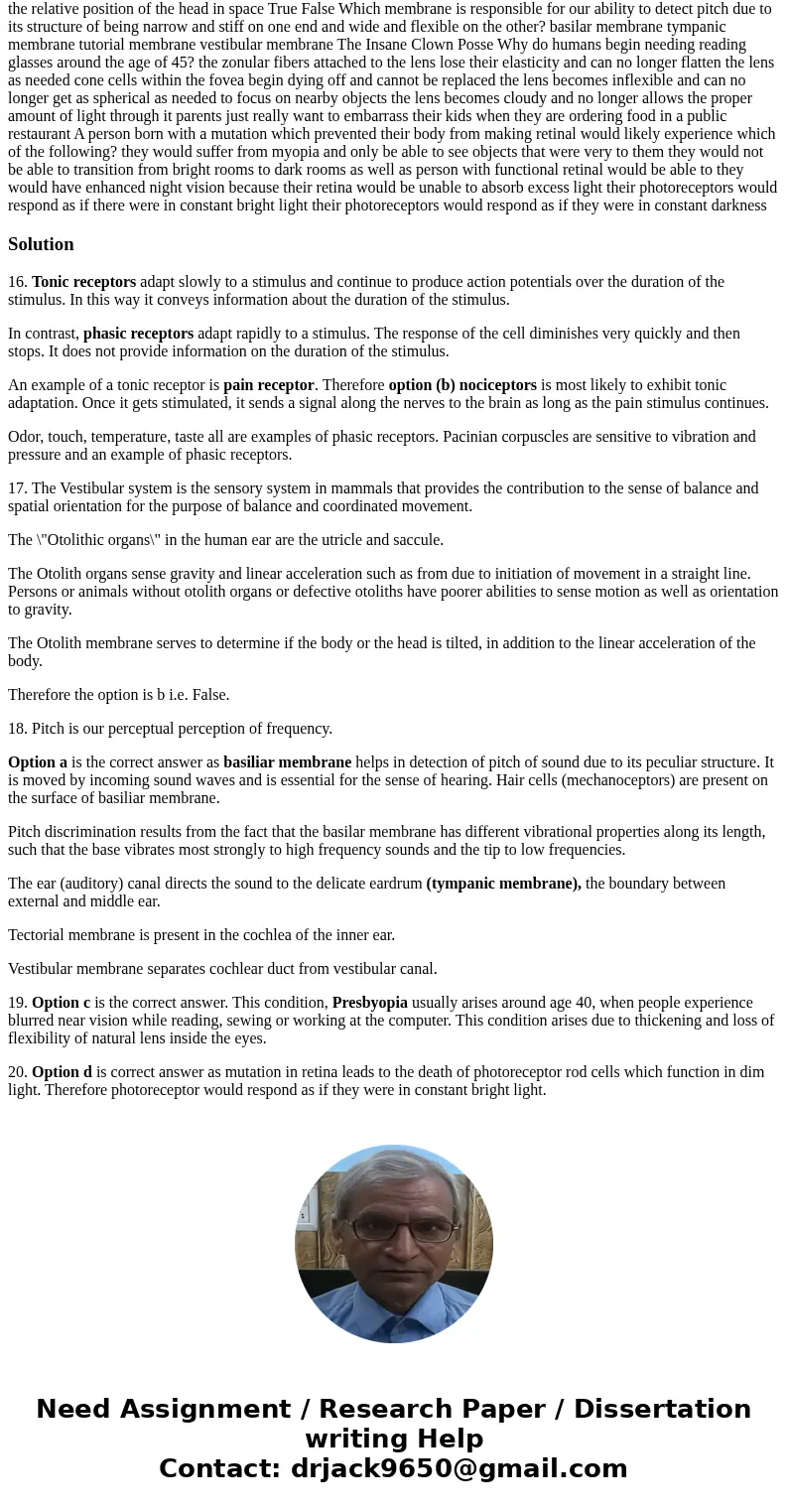Which of the following receptors is most likely to exhibit t
Solution
16. Tonic receptors adapt slowly to a stimulus and continue to produce action potentials over the duration of the stimulus. In this way it conveys information about the duration of the stimulus.
In contrast, phasic receptors adapt rapidly to a stimulus. The response of the cell diminishes very quickly and then stops. It does not provide information on the duration of the stimulus.
An example of a tonic receptor is pain receptor. Therefore option (b) nociceptors is most likely to exhibit tonic adaptation. Once it gets stimulated, it sends a signal along the nerves to the brain as long as the pain stimulus continues.
Odor, touch, temperature, taste all are examples of phasic receptors. Pacinian corpuscles are sensitive to vibration and pressure and an example of phasic receptors.
17. The Vestibular system is the sensory system in mammals that provides the contribution to the sense of balance and spatial orientation for the purpose of balance and coordinated movement.
The \"Otolithic organs\" in the human ear are the utricle and saccule.
The Otolith organs sense gravity and linear acceleration such as from due to initiation of movement in a straight line. Persons or animals without otolith organs or defective otoliths have poorer abilities to sense motion as well as orientation to gravity.
The Otolith membrane serves to determine if the body or the head is tilted, in addition to the linear acceleration of the body.
Therefore the option is b i.e. False.
18. Pitch is our perceptual perception of frequency.
Option a is the correct answer as basiliar membrane helps in detection of pitch of sound due to its peculiar structure. It is moved by incoming sound waves and is essential for the sense of hearing. Hair cells (mechanoceptors) are present on the surface of basiliar membrane.
Pitch discrimination results from the fact that the basilar membrane has different vibrational properties along its length, such that the base vibrates most strongly to high frequency sounds and the tip to low frequencies.
The ear (auditory) canal directs the sound to the delicate eardrum (tympanic membrane), the boundary between external and middle ear.
Tectorial membrane is present in the cochlea of the inner ear.
Vestibular membrane separates cochlear duct from vestibular canal.
19. Option c is the correct answer. This condition, Presbyopia usually arises around age 40, when people experience blurred near vision while reading, sewing or working at the computer. This condition arises due to thickening and loss of flexibility of natural lens inside the eyes.
20. Option d is correct answer as mutation in retina leads to the death of photoreceptor rod cells which function in dim light. Therefore photoreceptor would respond as if they were in constant bright light.


 Homework Sourse
Homework Sourse